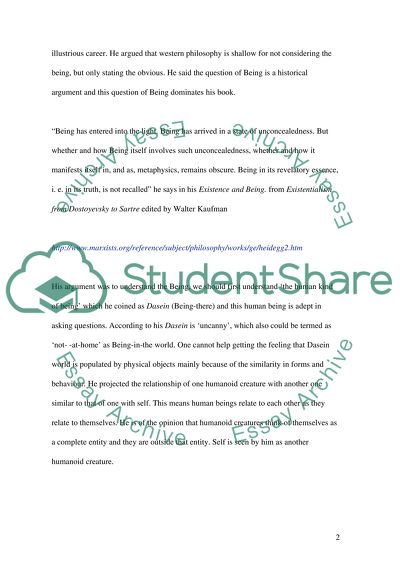Cite this document
(“Ontology or the Study of Being Essay Example | Topics and Well Written Essays - 2000 words”, n.d.)
Ontology or the Study of Being Essay Example | Topics and Well Written Essays - 2000 words. Retrieved from https://studentshare.org/philosophy/1532135-martin-heidegger-essay
Ontology or the Study of Being Essay Example | Topics and Well Written Essays - 2000 words. Retrieved from https://studentshare.org/philosophy/1532135-martin-heidegger-essay
(Ontology or the Study of Being Essay Example | Topics and Well Written Essays - 2000 Words)
Ontology or the Study of Being Essay Example | Topics and Well Written Essays - 2000 Words. https://studentshare.org/philosophy/1532135-martin-heidegger-essay.
Ontology or the Study of Being Essay Example | Topics and Well Written Essays - 2000 Words. https://studentshare.org/philosophy/1532135-martin-heidegger-essay.
“Ontology or the Study of Being Essay Example | Topics and Well Written Essays - 2000 Words”, n.d. https://studentshare.org/philosophy/1532135-martin-heidegger-essay.


